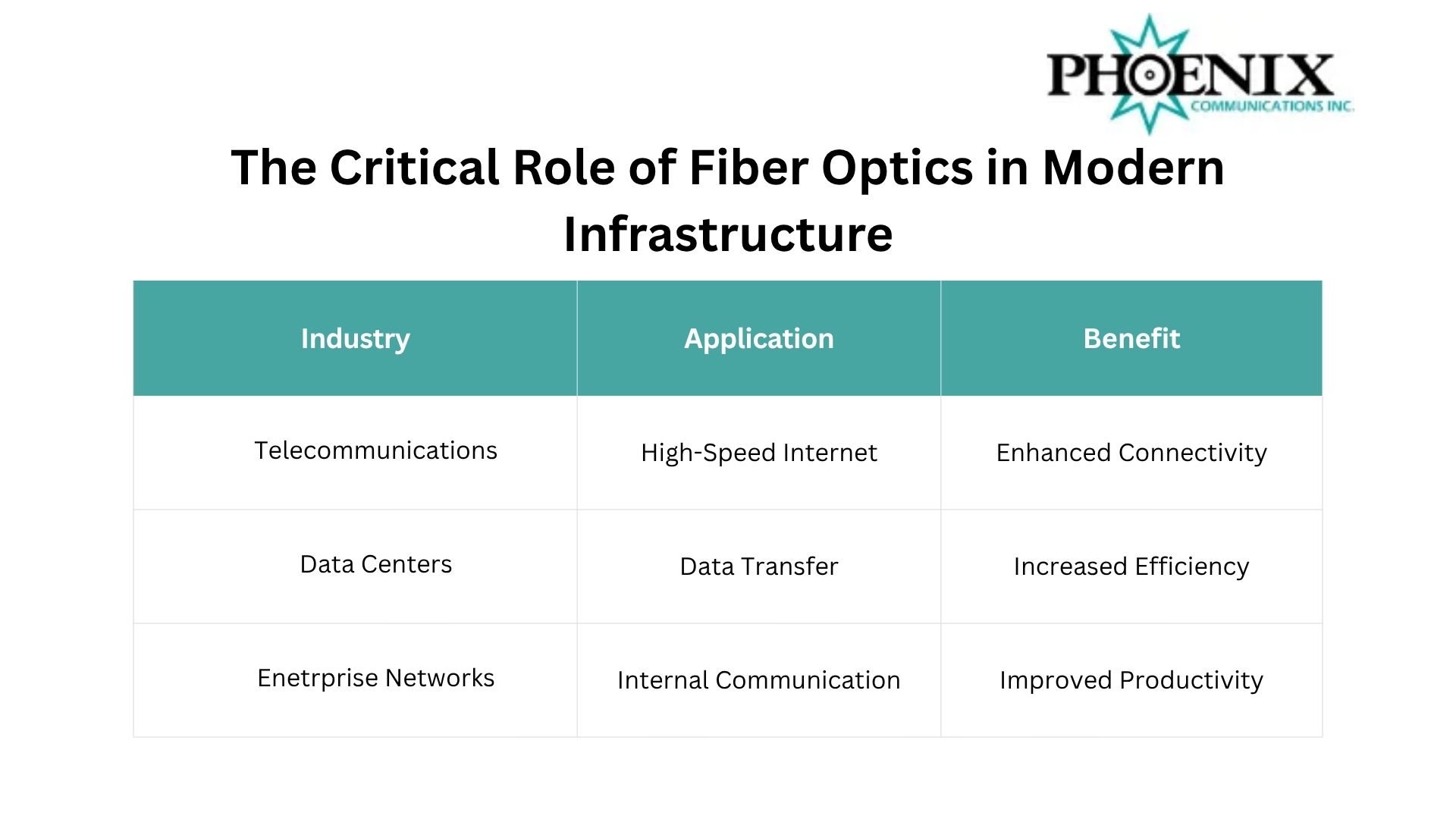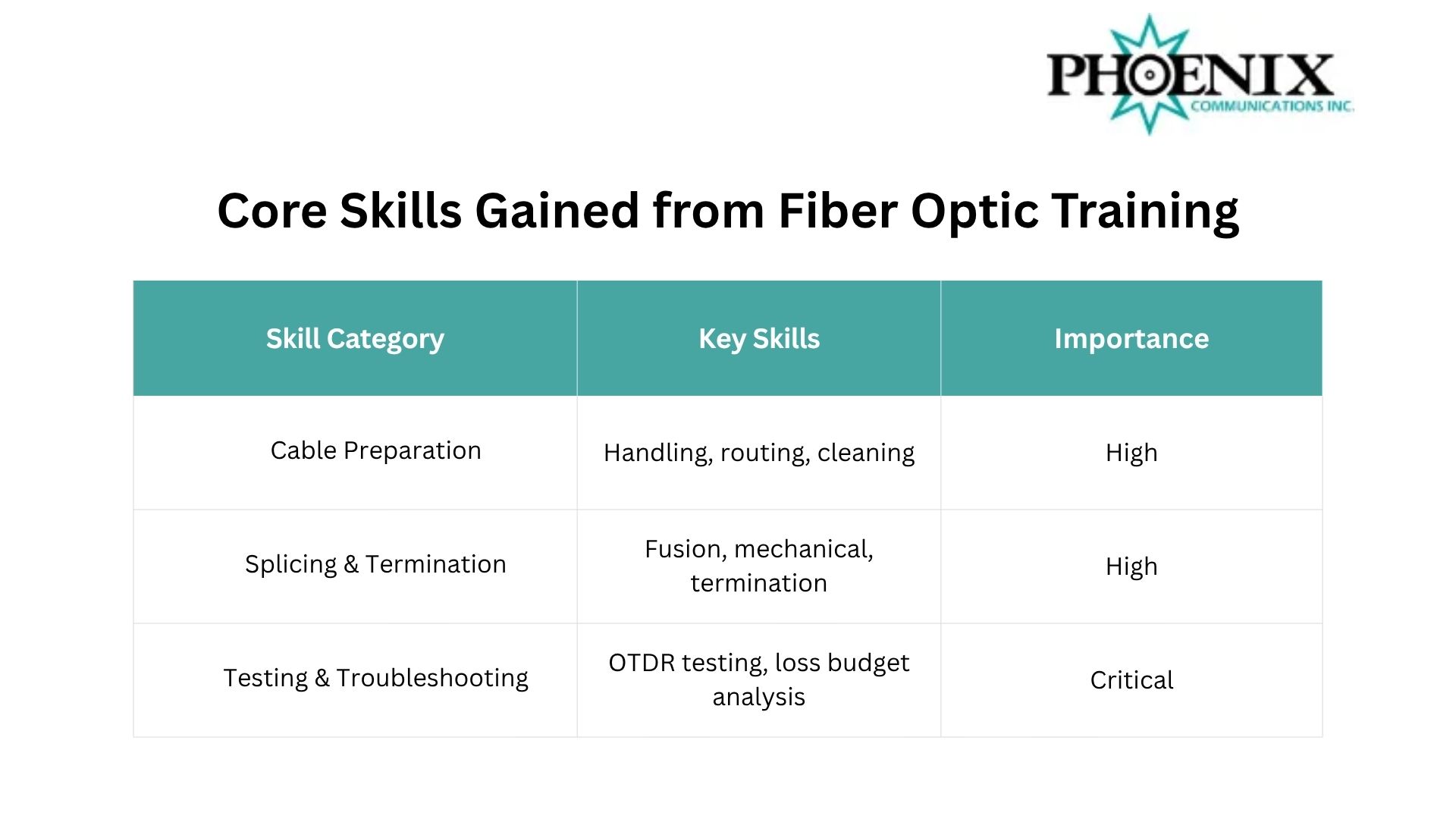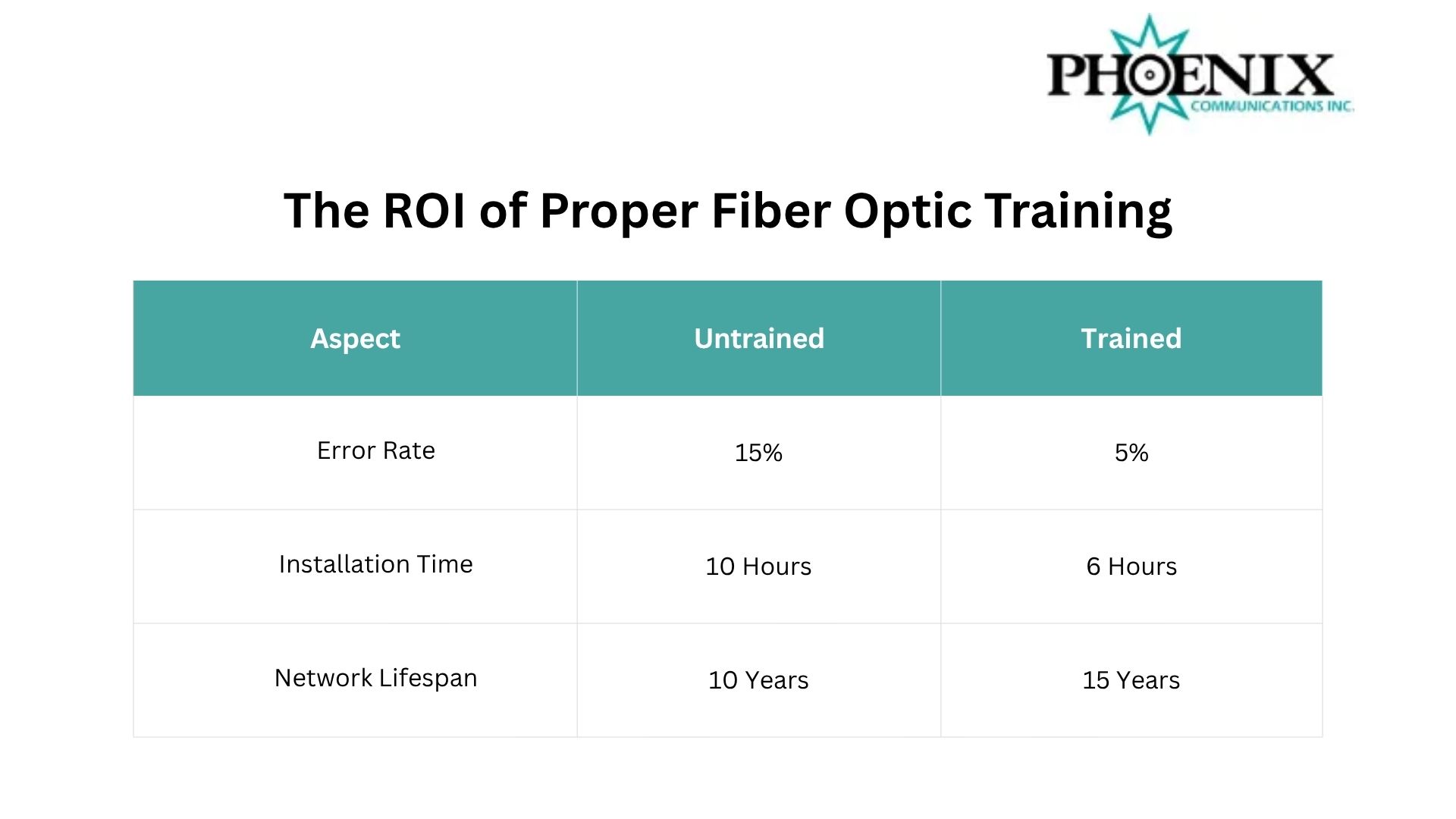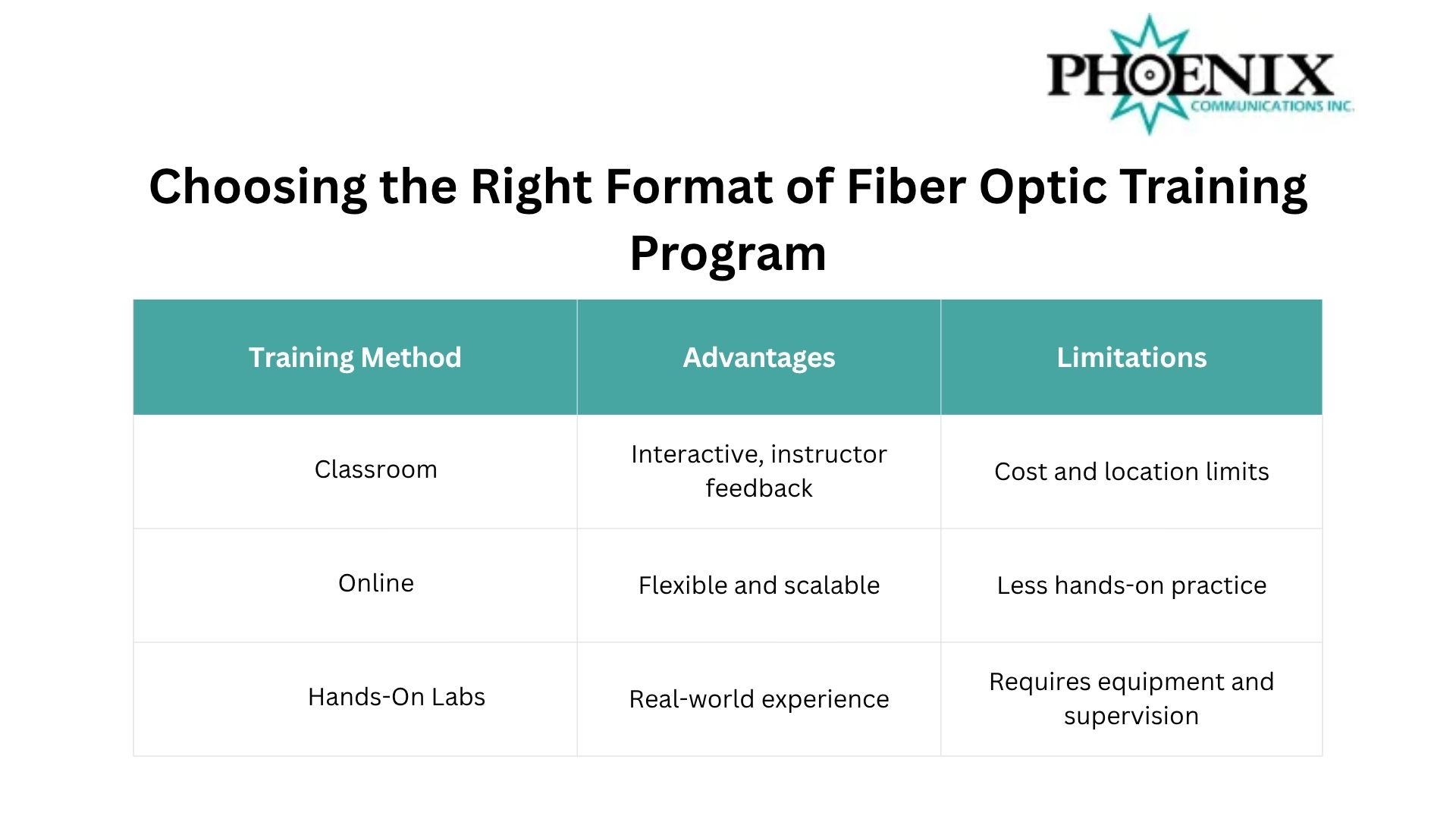Key Takeaways
- Fiber optic professionals play a critical role in maintaining modern telecommunications infrastructure.
- Comprehensive training ensures professionals can safely manage complex network systems.
- Proper training reduces errors, improves network performance, and extends system lifespan.
- Industry-recognized certifications validate technical competence.
- The need for trained fiber optic technicians continues to grow as data demand increases.
The demand for high-speed internet and reliable telecommunications continues to rise, making fiber optic networks the backbone of modern connectivity. Behind these systems are fiber optic professionals, professionals responsible for installing, maintaining, and repairing the delicate infrastructure that keeps data flowing quickly and securely.
However, this work requires precision and expertise. Without proper training, professionals risk costly mistakes, network failures, and safety hazards. That’s why comprehensive fiber optic training is essential for maintaining reliability, efficiency, and safety in today’s digital world.
The Critical Role of Fiber Optics in Modern Infrastructure
Fiber optics forms the foundation of our connected society. From cloud computing and video streaming to smart devices and 5G technology, every data-driven service depends on fast, reliable transmission.
Growing Demand Across Industries
- Telecommunications: Internet Service Providers (ISPs) rely on fiber optics to deliver high-speed internet and voice services.
- Data Centers: Fiber cables allow for high-volume, low-latency data transfers between servers and facilities.
- Enterprise Networks: Businesses use fiber optics to improve communication, productivity, and internal connectivity.

Understanding the Complexity of Fiber Optic Systems
Fiber optic networks are built with incredible precision. A single strand of fiber — thinner than a human hair — can carry terabits of data per second, but only when installed and maintained correctly.
Key Components
- Optical Fibers: Transmit data as light signals.
- Transmitters & Receivers: Convert data to and from light pulses.
- Amplifiers & Connectors: Maintain signal strength and integrity over long distances.
Precision Requirements
Fiber optic installation demands micron-level accuracy. A small misalignment or contaminant can cause signal loss or failure. Additionally, temperature, humidity, and physical stress all impact performance — making trained technicians vital for quality control.

Risks of Untrained Personnel
Working with fiber optics without proper training can create safety, performance, and financial risks.
Safety Hazards
Untrained staff may mishandle fiber shards, laser light, or chemical coatings — leading to injuries or equipment damage. Training covers safe handling, disposal, and eye protection procedures.
Network Damage and Downtime
Improper splicing, bending, or cleaning can break fibers and cause network outages. Each hour of downtime can cost thousands in lost productivity and repairs.
Outage Duration and Estimated Cost
1 hour - $1,000
4 hours - $4,000
24 hours - $24,000
Why This Matters
Comprehensive training minimizes these risks, ensuring systems remain stable, safe, and cost-effective.
The Value of Professional Fiber Optic Training
Professional training programs equip technicians with the skills needed to meet evolving industry demands.
Building Foundational Knowledge
Training covers the principles of fiber transmission, network architecture, and safety protocols — forming a base for technical growth.
Developing Technical Competence
Hands-on training in splicing, termination, and testing prepares technicians for real-world challenges. They also learn to use advanced tools like OTDRs (Optical Time-Domain Reflectometers) to identify faults and optimize performance.
Ensuring Quality and Consistency
Certified programs teach industry best practices aligned with IEC and TIA standards, ensuring every connection meets professional benchmarks.
Benefits include:
- Enhanced technical skills
- Improved safety awareness
- Consistent quality and fewer errors
- Greater efficiency in installation and maintenance
Core Skills Gained from Fiber Optic Training

Key Technical Abilities
- Cable Handling: Prevents microbends and physical stress.
- Splicing Techniques: Achieves low-loss, high-strength fiber joints.
- OTDR Testing: Detects faults and measures signal loss for quality assurance.
The ROI of Proper Fiber Optic Training
Investing in training isn’t just about compliance — it directly improves financial performance.

Results:
- Fewer costly mistakes
- Faster project completion
- Longer network reliability
- Reduced downtime and rework costs
Training quickly pays for itself through higher productivity and fewer failures.
Implementing an Effective Fiber Optic Training Program
1. Assess Skill Gaps
Identify technician strengths and weaknesses through audits or performance reviews. Focus on safety, testing, and precision handling.
2. Choose the Right Format

3. Maintain Continuous Learning
Technology evolves fast. Regular refresher courses and certifications keep technicians current with new tools, standards, and safety regulations.
Pro Tip: Foster a culture of continuous learning — reward certifications and recognize employees who complete advanced training.
Industry Standards and Certifications
At Phoenix Communications Inc., quality isn’t just a goal — it’s part of who we are.
We take the time necessary to hire, train, and develop the best professionals in the industry. The result? Our clients receive the highest quality and most dependable network possible.
Every member of our field team is thoroughly trained and certified to uphold the highest safety and performance standards. This commitment to excellence ensures that every project — from fiber optic splicing to large-scale network builds — is completed safely, efficiently, and in full compliance with industry regulations.
Our Team Is Certified In:
- OSHA 10
- OSHA 30
- Fall Protection
- Enclosed / Confined Space
- OSHA 1910.268 – Telecommunications
- Railroad Safety
- OSHA 1910.269 – Electric Power Generation, Transmission & Distribution
- Insulate & Isolate Procedures
- CPR / First Aid (AHA)
- 3D Driver
- NEPPA – Northeast Public Power Association
Commitment to Safety and Excellence
Each certification represents our dedication to maintaining the safest possible worksites and the most reliable results for our clients. From OSHA compliance and fall protection to telecommunications-specific safety protocols, every technician on our team is equipped to perform with precision, safety, and professionalism.
Empower Your Team with Phoenix Communications Inc.
At Phoenix Communications Inc., we specialize in fiber optic construction, splicing, and professional training programs that help organizations build a more skilled and reliable workforce.
Our hands-on training equips technicians with the skills to handle modern fiber systems safely and efficiently — from fusion splicing and OTDR testing to large-scale network builds. With decades of experience in telecommunications infrastructure, we bring real-world knowledge directly into every training session.
Partner with Phoenix Communications to:
- Reduce installation errors and network downtime
- Improve team safety and compliance with industry standards
- Stay ahead of evolving technologies and best practices
Contact our team today to learn how our expert-led fiber optic training can enhance your network reliability and technician performance.
Investing in Excellence Through Training
Fiber optics power everything from streaming services to critical infrastructure. Their complexity demands a highly skilled workforce.
By investing in professional training, companies gain safer operations, fewer network issues, and better long-term returns. Trained technicians ensure installations meet strict standards and perform optimally — safeguarding both customers and company reputation.
In short:
Training isn’t an expense — it’s a strategic investment that drives reliability, safety, and long-term success.
FAQs
What is the importance of training for fiber optic professionals?
Training equips professionals with essential technical and safety skills, reducing risks, errors, and downtime.
What are the risks of untrained personnel?
Untrained workers can cause injuries, damage cables, or trigger costly outages that affect network reliability.
What skills do technicians learn in fiber optic training?
They gain expertise in cable preparation, splicing, termination, testing, and troubleshooting using OTDR technology.
Why are certifications important?
Certifications like FOA and ETA prove a technician’s competence and ensure compliance with international standards.
How does training improve ROI?
Proper training cuts error rates, shortens installation time, and extends network lifespan — saving significant long-term costs.
